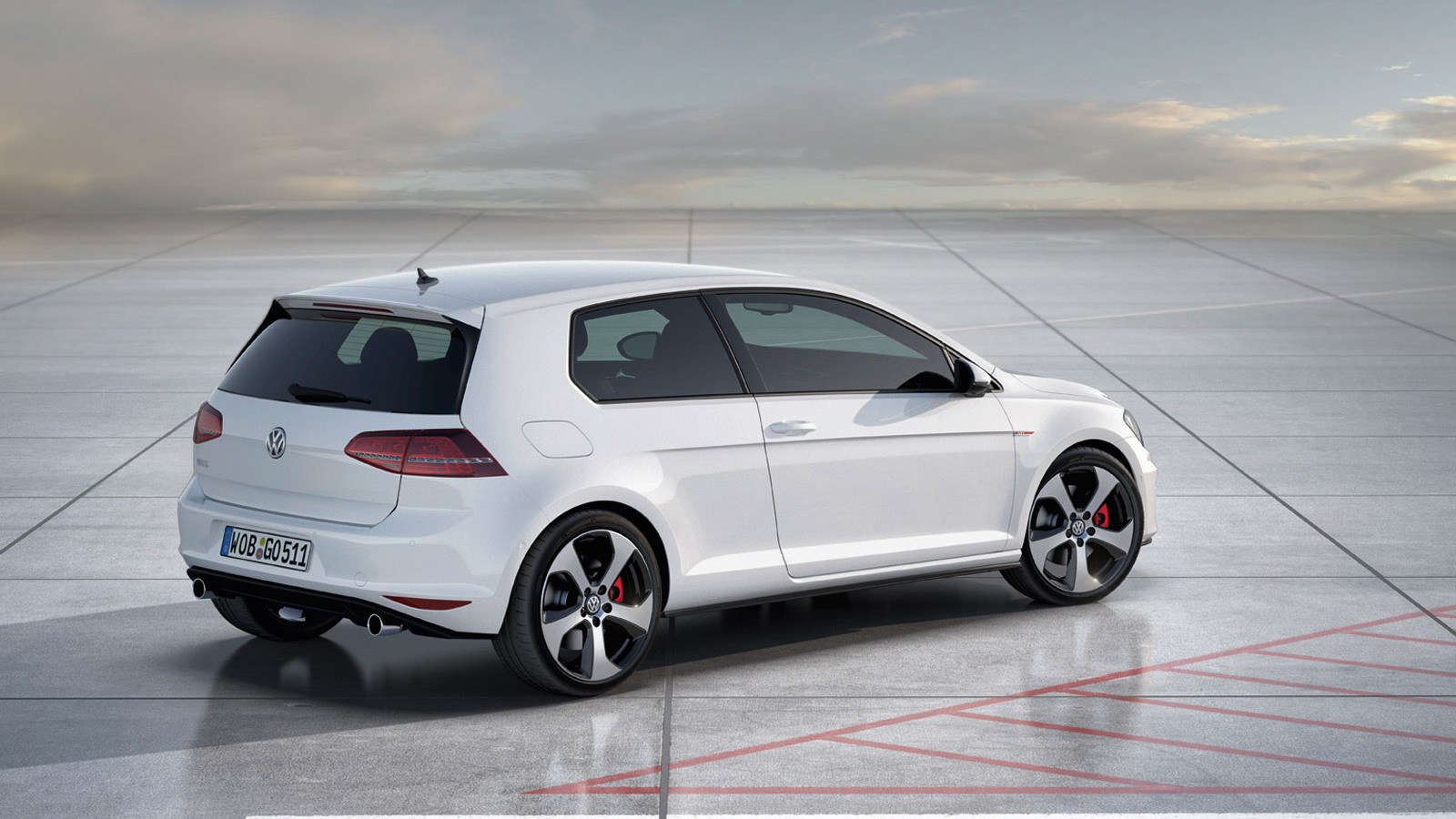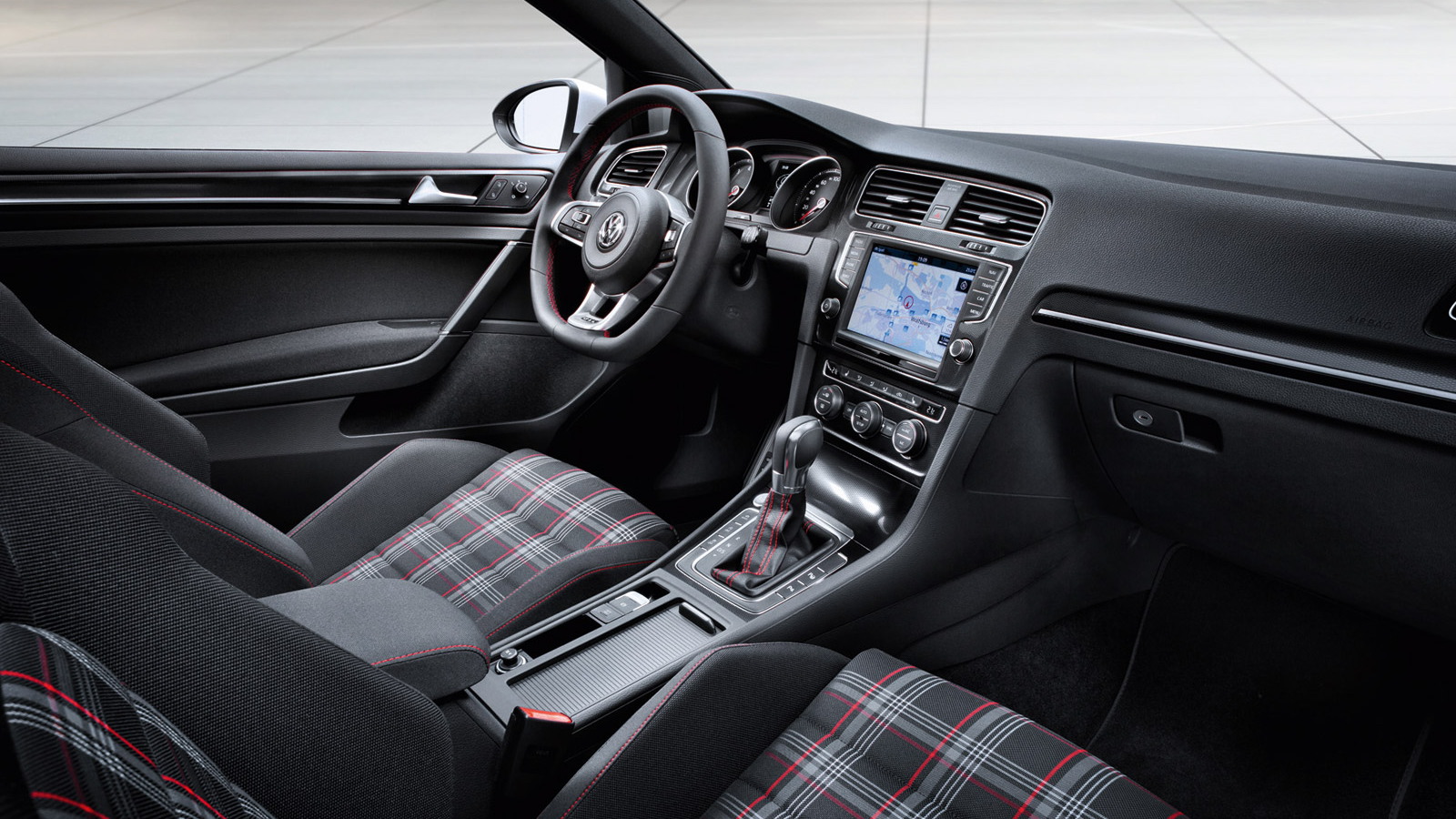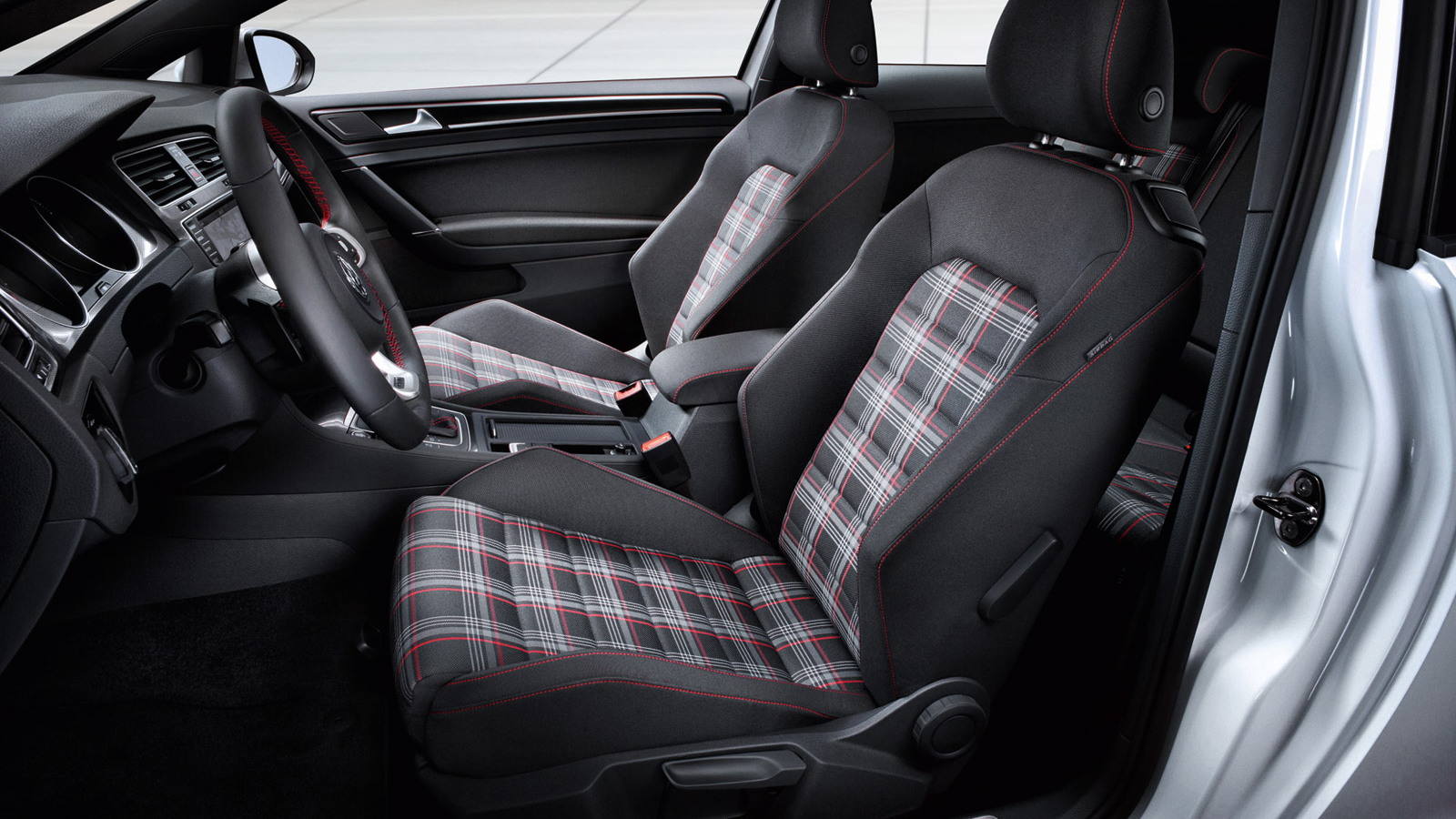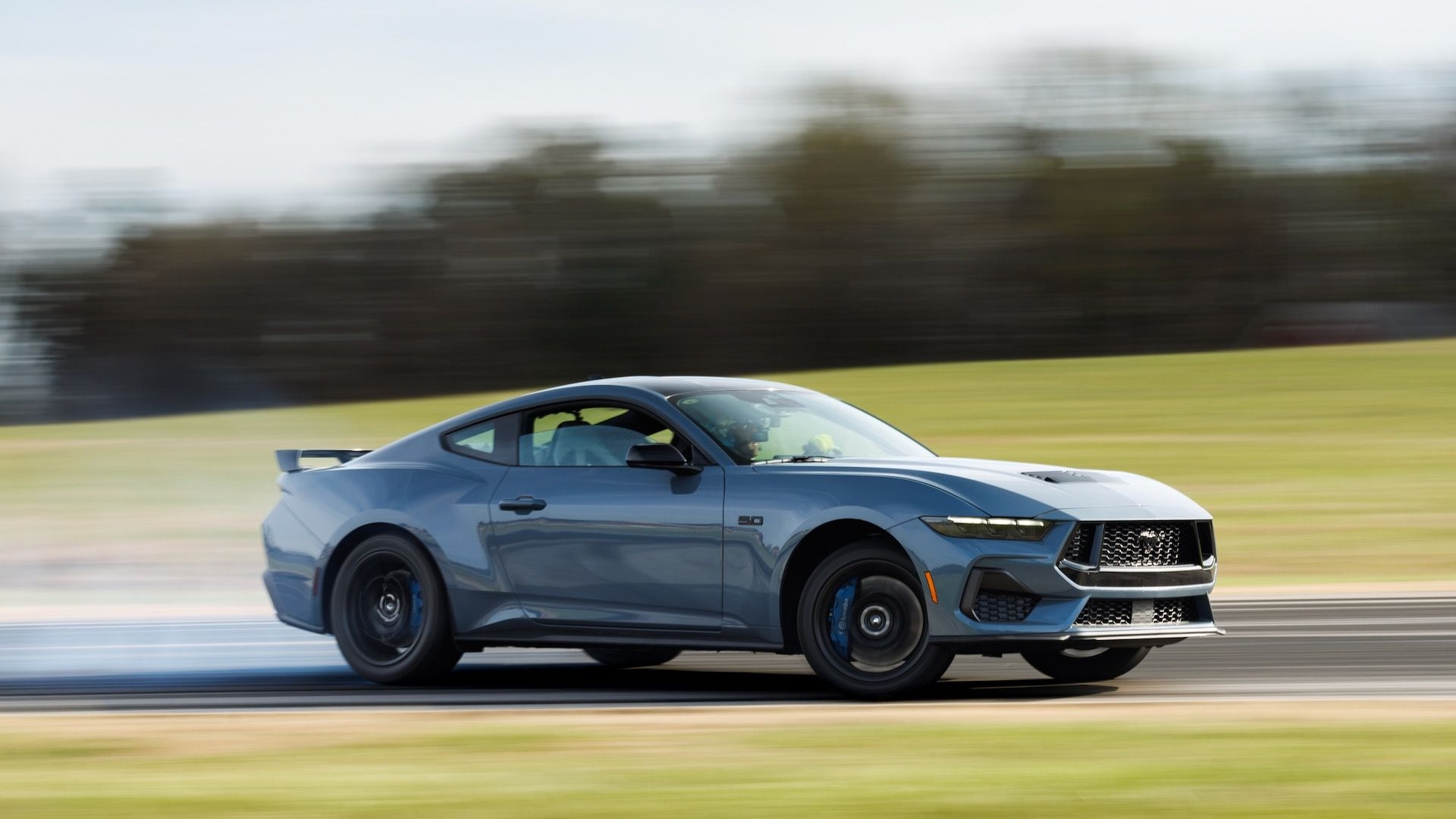These official images reveal predictable styling for the seventh-generation of the GTI. Traditional elements include the honeycomb grille with a red bar running its length, the new iteration of the GTI’s ‘Denver’ style wheels, and twin exhaust tips finished in chrome.
Compared with the regular Golf, the GTI sits some 15 millimeters lower, features sportier bumpers, and upgraded brakes with red calipers. Wheel sizes range from 17 to 18 inches, and in addition to the Denver style wheels, customers will be able to order Detroit, Glendale or Brooklyn patterns.
Power comes from a turbocharged 2.0-liter four-cylinder engine once again, but this time rated at 217 horsepower, a gain of around 17 horsepower compared to the outgoing MkVI GTI. For the power hungry, an available performance pack lifts output to 227 horsepower, giving the 2014 GTI a better chance against the latest Ford Focus ST and Mazda Mazdaspeed3.
Drive still goes to the front wheels only, via a six-speed manual or six-speed DSG dual-clutch transmission, and all GTI’s will come with an engine stop-start system. VW predicts a 0-60 mph time of approximately 6.6 seconds and top speed of 152 mph. With the new performance pack, look for a 0-60 time of 6.5 seconds and a top speed of 155 mph.
The performance pack not only offers a boost in power, but also in handling: instead of 16-inch brakes, this version gets huge 17-inch brakes (with GTI badges on the calipers) and a front axle differential lock (VAQ). Designed to offer what the automaker claims is “more agile steering behavior,” the VAQ system has already been shown to cut Nürburgring lap times by up to eight seconds when compared to a model without the system.
It’s based on a multi-plate coupler that is located between the differential cage and the right drive shaft. The pressure required to actuate the VAQ is produced and regulated by an electrically-powered hydraulic pump. A control unit continually adjusts for the optimal locking power as a function of the driving situation. In dynamic driving, VAQ applies the drive torque to the wheel on the inside of the curve and the outer wheel on the road according to the different vertical wheel forces. The vehicle remains very neutral right up to its performance limits by this torque vectoring effect, and traction is also improved when driving on loose and wet road surfaces and in turning situations.
On top of this, the new GTI also gets a speed-sensitive electronic power steering system, as well as lighter construction than the current model--around 200 pounds less--thanks to the latest MQB platform.

2014 Volkswagen GTI concept
Note, these specs are for the European model, which goes on sale early next year. Look for U.S. specifications closer to the GTI’s local launch in the second half of 2013.
For more from this week's 2012 Paris Auto Show, be sure to check our dedicated show page.
Volkswagen provided airfare, lodging, and meals to enable High Gear Media to cover the Paris Auto Show.








